Wrist Sprain: Symptoms, Treatment, and Recovery Tips
A Wrist Sprain is defined as a Stretching or pulling of tissues (ligaments) attaching wrist bones and joints in the wrist. A wrist sprain can occur due to a sports injury or trauma. Wrist swelling, pain, bruising, and tenderness are signs of wrist sprain.
Rest, ice, pain relievers, and elevation of the wrist can benefit wrist sprain. A physician may immobilize the wrist with a splint. A common injury for many different types of athletes is a wrist sprain. All it takes is a brief loss of equilibrium.
You instinctively reach out to stop yourself from falling as soon as you start to slip. However, the force of impact causes your hand to bend back towards your forearm as soon as it touches the ground. This may put undue strain on the ligaments that join the hand and wrist bones. Little tears in the ligament or, worse, a total break, are the outcome.
What is a wrist sprain?
The damage to the ligaments that keep your bones together is called a sprain. Ligaments are tissue bands that support and link bones and joints. A common injury that is typically brought on by falls or sports-related incidents is wrist sprains.
A sprained wrist can typically be treated at home with over-the-counter medication, rest, ice, and compression. See a medical professional to ensure that the injury you suffered did not cause any harm to the bones or other tissues in your wrist. The damage to the ligaments that keep your bones together is called a sprain. Ligaments are tissue bands that support and link bones, joints, and organs.
They are resilient and highly flexible by nature. Your eight wrist bones are supported by twenty ligaments. Something that stretches your wrist ligaments to the point of destruction results in a sprained wrist. The most often injured ligament is the scapholunate ligament, which joins your scaphoid and lunate bones.
The majority of wrist sprains are mild injuries caused by stretching your wrist ligaments past their breaking point. Tearing a ligament results in more severe sprains. Sprains typically hurt. Using or moving a damaged wrist may be difficult. The majority of wrist sprains can be treated at home using over-the-counter (OTC) medication, rest, and ice.
If, even using at-home therapies for a few days, your wrist discomfort and other symptoms persist, see a healthcare professional. A sprain is a ligament partial damage. Ligaments serve as the linkages between the various wrist bones.
Ligament sprains can vary in severity from little strains to full tears. The wrist has several ligaments that can sprain. Two of the more common ones are the TFCC (triangular fibrocartilage complex) on the outside of the wrist and the scapholunate ligament, which is located in the middle of the wrist between the scaphoid and lunate bones. An injured wrist can occasionally cause a little fragment of bone to come off.
What are the symptoms of a sprained wrist?
The following are the most typical signs of a sprained wrist:
- Wrist pain.
- Swelling.
- Bruising or discoloration.
- Trouble moving your wrist.
- Tenderness and warmth around the injury
- Having a popping or tearing sensation in your wrist
- Bruising
- Loss of motion
- Weakness
Sprains are usually divided into three grades:
- Grade I: Grade I: Pain and some ligament injury
- Grade II: It may be discomfort, a deeper ligament injury, a loose feeling in the joint, and a partial loss of function.
- Grade III: A completely torn ligament, severe joint elasticity, pain, and loss of function.
What causes wrist sprains?
A wrist sprain can result from anything that exerts enough force to overstretch or twist the ligaments in your wrist. The most common causes include:
- Falls (particularly using your outstretched hands to catch yourself after a fall).
- Sports injuries.
- Traumas like car accidents.
- Though far less often, the following medical disorders may exert enough strain on your wrist ligaments to cause them to stretch and sprain:
- Infections.
- Rheumatoid arthritis.
- Psoriatic arthritis.
Wrist sprains are common in:
- Basketball players
- Baseball players
- Gymnasts
- Divers
- Skiers, particularly those who fall but manage to grasp onto a pole
- Skaters
- Skateboarders
- Inline skaters
What are the complications of a wrist sprain?
The most frequent side effects from a wrist sprain include further ailments, such as:
- fractures of the bones, particularly certain kinds of wrist breaks such as Colles and Smith fractures.
- Muscle strains.
- Tendon injuries.
- Nerve damage.
How are wrist sprains diagnosed?
An examination by a medical professional will determine the cause of a sprained wrist. After examining your wrist, they will inquire about your symptoms. Tell your doctor what you were doing just before you hurt your wrist and when the pain started.
Your range of motion the amount of movement you can achieve in a joint may be assessed by your healthcare professional by having you move your wrist. Instruct them to let you know if and when that movement hurts.
What tests are done to diagnose wrist sprains?
Your physician will likely take an X-ray of your wrist to see whether your bones have been damaged as well as to capture images of your injured wrist ligaments. It may also be essential to perform a computed tomography (CT) scan or magnetic resonance imaging (MRI).
How are wrist sprains treated?
The good news is that mild to severe wrist sprains should recover on their own, even though they can bench you for a time. All they require is some time. You can: expedite the healing process
- Rest: Give your wrist a minimum of 48 hours of rest.
- Ice your wrist to relieve pain and swelling. For two to three days, or until the discomfort goes away, do this for 10 to 30 minutes every three to four hours.
- Compress the wrist with a bandage.
- Elevate your wrist above your heart, on a pillow, or on the back of a chair. as often as you can.
- Take anti-inflammatory painkillers. Pain and swelling can be reduced using non-steroidal anti-inflammatory medicines (NSAIDs), such as Motrin, Aleve, and Advil. On the other hand, these medications may cause adverse effects such as increased bleeding and ulcer risk. Unless your doctor specifically instructs you otherwise, they should only be used infrequently.
- Use a cast or splint: This should only be done temporarily before you visit the physician. Then, heed the physician’s recommendations regarding whether to keep wearing the splint. In certain situations, using a splint for an extended period might worsen stiffness and muscular weakness.
- Practice stretching and strengthening exercises: stiffness and muscular weakness. Exercises for strengthening and stretching should be done as prescribed by your physician. To create a treatment plan specific to your condition, it is best to consult with a physical or occupational therapist.
- Surgery can be necessary to treat more severe Grade III wrist sprains when the ligament has ruptured.
Wrist sprain surgery
- Surgery is not usually required for a sprained wrist. However, you might require surgery to restore the damage if the fall or accident that injured your wrist resulted in additional injuries.
- A less invasive technique termed an arthroscopy may be used during surgery. Your surgeon will examine your bones and ligaments by making a tiny incision (cut) and inserting a tiny camera (arthroscope). To fix the wrist joint and its ligaments, small tools will be inserted.
- More severe injuries may require open surgery. In this case, your surgeon will cut into the back of your wrist. They will fix your injured ligaments and realign your bones to their proper positions.
Physiotherapy management for Wrist sprain
You can reduce stiffness and increase mobility by practicing mild wrist exercises with a physical therapist. Before performing the exercises, take off any splints that you may have been given. Repeat the following two or three times a day:
Finger range of motion
- Stretch out your fingers while maintaining a straight wrist and fingers. Put your thumb on each fingertip individually.
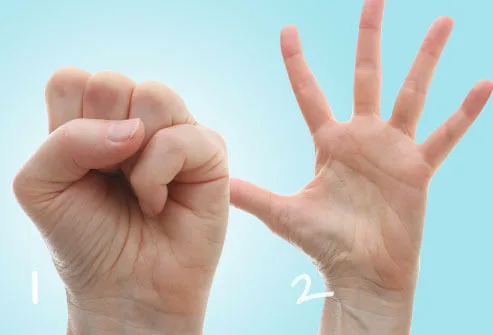
Fist exercise
- Keep your wrist and fingers straight as you extend your fingers. Place your thumb on each fingertip.
Wrist lifts
- Put your arm at the edge of a table, forearm, and palm facing up.
- Verify that your wrist is resting over the table’s edge.
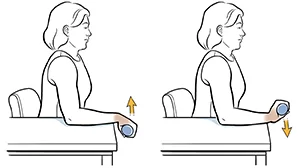
- grab a lightweight, like a 2-pound dumbbell. slowly flex your wrist, moving the weight toward the roof. Return to the initial position and repeat 15 to 20 times.
- This exercise can also be performed with your palm facing downward.
Wrist Flexion Stretch

- Seated with your arm extended and facing upwards, perform this stretch. Stretch your wrist and forearm by pulling your hand gently in your direction. Repeat this stretch a few times after holding it for 15 to 30 seconds and releasing it gradually.
Wrist Extension Stretch
- This training will help support the muscles around the wrist and help control future sprains.
- Place your arm flat on a table so that your wrist hangs off the edge and your palm faces downward.
- To maintain your forearm in position and lift your wrist as high as possible, use a light hand weight, like a soup can or a water bottle.
- Five times over, slowly lower the hand weight back down.
Grip Strengthening
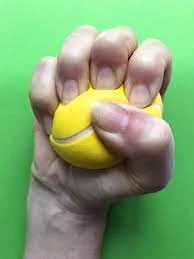
- Exercises to strengthen your grip are essential if you want to maintain proper wrist function. The use of a rubber band is one easy method for doing this.
- Place your fingers together and encircle them with a rubber band (the harder it is, the thicker the band).
- Stretch your fingers apart and hold for three to five seconds when your fingers are safely inside the band.
- Let go and carry on.
- Squeezing a tennis ball can help you improve your grip if you don’t have a rubber band. For fifteen seconds, try to squeeze the ball as hard as you can; after that, let go for fifteen seconds. Perform this sequence three times, or multiple times throughout the day.
Ulnar Deviation Exercise
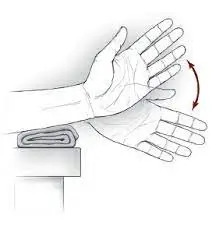
- Put your arms down by your sides and stand erect.
- The wrist bends towards your pinky finger and then back towards your thumb while holding a tiny weight.
- Exercise five to ten times, holding each position for three seconds each time.
Wrist Circles
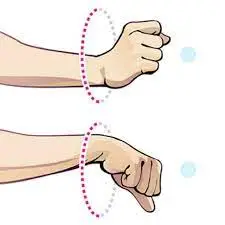
- Your range of motion will be enhanced by this dynamic wrist stretch.
- Place the soles of your feet shoulder-width apart.
- Lift your hands to shoulder level and join them by interlocking your fingers.
- Begin to slowly and gently turn your wrists in a circle. As you go, be sure to move both clockwise and anticlockwise.
- Repeat after doing this five times.
- A wrist sprain can be delicate. When exercising, stop right away and apply ice to your wrist for ten to fifteen minutes if you experience any pain. Excessive straining on a sprained wrist can worsen the injury and take longer to heal.
Home remedies for wrist sprain:
- To prevent the wrist from swelling more, it’s essential to elevate it and get rest. Elevate your arm on pillows so that your wrist is above your heart, if possible.
- Utilize over-the-counter analgesics as required.
- Apply crushed ice or a packet of frozen peas wrapped in a damp towel to the affected region to reduce discomfort and swelling. Every two hours, apply for up to 20 minutes for the best results. Remove if uncomfortable, as cold can burn.
- To avoid stiffness, start slowly moving the wrist and hand as soon as the pain and swelling begin to decrease.
- Apply turmeric over the swelling area.
After spraining my wrist, when will I feel better?
The length of recovery time varies based on the severity of your wrist sprain, but it usually ends when you are pain-free and able to move your elbow, wrist, and hand through their entire range of motion.
It could take these wounds anywhere from two to ten weeks to heal. But that’s only an approximation. Although everyone recovers differently, the degree of sprain and appropriate care often affect how long it takes to heal. In contrast to grade 3, which could take up to three months, grade 1 usually takes two to four weeks.
You might want to start an activity that doesn’t harm your wrist while you recover. Skiers should attempt stationary biking or jogging instead of using their ski poles.
In whatever you do, take your time. Resuming your previous level of physical exercise should wait until:
- When your wrist is relaxed, you don’t experience any pain.
- You can exercise without suffering discomfort and grasp and handle objects like a bat, racket, or ski pole.
- The hand, arm, and wounded wrist on that side feel just as strong as the unaffected hand, arm, and wrist.
How much time does it take to heal from a sprained wrist?
A sprained wrist typically requires several weeks to heal. As soon as you begin treatment, your pain and swelling symptoms ought to get better.
Prevention
During sports or other physical exercises:
- Before participating in exercise or sports, warm up.
- Make sure you’re wearing proper equipment.
- If you experience wrist pain during or after working out, avoid “playing through the pain.”
- Allow your body time to restore itself after participating in a strenuous activity.
- After a workout, stretch and cool down.
Prognosis
- You should plan on recovering completely if you sprained your wrist. You should be able to return to all of your usual activities as soon as your ligaments have recovered, as sprains are frequently temporary injuries.
- Consult your healthcare professional before beginning a fitness regimen or returning to sports. If you overstress it before it has healed, you run the risk of damaging your wrist again and raising the possibility of issues and other injuries.
When should I see my healthcare provider?
See a doctor if you have wrist discomfort following a fall or other injury, especially if the symptoms don’t go away after a few days. If you feel like you may have a fractured bone or have experienced trauma, get to the emergency department.
For a sprained wrist, what are the dos and don’ts?
Orthopedic surgeons are experts in the prevention, diagnosis, and treatment of conditions affecting the muscles, ligaments, tendons, cartilage, connective tissues, and bones. This covers everything, from detecting illnesses that may impair your long-term quality of life to managing chronic pain and treating severe injuries like a sprained wrist.
If you want to shorten the time it takes to recover from a sprained wrist, no matter how bad it is, you must take the right actions to allow the healing process to continue. You must adhere to the precise instructions provided by your physician and refrain from doing certain activities that may exacerbate your injured wrist.
Do’s for a Sprained Wrist:
- Rest the injury — Simple rest—that is, avoiding activities that may worsen the injury—allows for the reduction of swelling, the easing of discomfort, and the restoration of range of motion. If the joint isn’t rested, it might go from a minor tear in the ligament to something much more dangerous.
- Mild stretching and physical therapy — While resting is the best treatment for a sprained wrist, physical therapy exercises and stretching are frequently the initial steps in any orthopedic treatment. These exercises will help you heal more quickly and return to your favorite activities.
- Wrap your sprained wrist — Using compression bandages and wrist wraps provides additional support for your wrist during the healing process, helps minimize swelling, limits mobility, and lessens the possibility of subsequent injury. The bandages should be tight, but not so tight that they tingle or produce numbness.
- Elevate your wrist — Another way to lessen swelling and promote normal ligament healing is to elevate your damaged wrist above your heart when at rest or whenever possible.
- Use ice — As a general rule, you should ice your wrist for 20 to 30 minutes every three to four hours for two to three days, or until the situation gets better. Ice is fantastic for lowering inflammation and accelerating healing, whether it’s applied topically or as an ice bath.
Don’ts for a Sprained Wrist:
- Sudden movements — Attempting to “fight through” an injury such as a sprained wrist is never a smart idea. Intense activities, such as going back to usual activities too quickly or applying too much pressure to an unstable joint, can exacerbate a ligament rupture and slow down the healing process.
- Using heat —After an acute injury, applying heating pads, heated compresses, or even a hot towel too soon causes swelling and increased blood flow to the affected area. For the first two or three days, always use ice instead of heat. In the later stages of recovery, heat can be applied to enhance blood flow.
- Taking too much medicine — After a sprained wrist injury, non-steroidal anti-inflammatory medications may be required to reduce inflammation and offer immediate relief. However, they ought to be taken moderately and under a doctor’s supervision. Addiction is one of the unforeseen side effects of taking too much medication.
- Thinking that you don’t need to see a doctor — It’s best to see an orthopedic specialist as soon as possible if your condition is not getting better or if you’ve had a serious accident to rule out further issues and start you on the appropriate treatment plan.
Conclusion
One of the most typical injuries people have is a sprained wrist. However, a sprain still causes pain and irritation. See a doctor as soon as you experience wrist discomfort or swelling, particularly if you were injured in a sports accident or fell.
Your doctor will identify the nature of your injury and recommend a course of action that will enable you to get back to your regular activities as soon as possible. Take your time getting well. Your body requires time to repair itself.
Find out from your healthcare practitioner when you can start exercising again or participating in sports. Missing a few weeks of workouts, sports, or other events could be inconvenient, but it’s well worth the effort.
FAQ
What is the healing time for a sprained wrist?
Patients who experience a complete rupture of their ligaments may require surgery to fully regain the use of their wrist ligaments. One to three weeks is the average recovery time for a grade 1 sprain, three to six weeks for a grade 2 sprain, and several months for a grade 3 injury.
If I sprained my wrist, how can I explain?
Pain.
Swelling.
Tenderness and warmth around the injury.
having a popping or ripping sensation in the wrist.
Bruising.
Loss of motion.
Weakness.
What treatment is most effective for a sprained wrist?
A common injury, wrist sprains is typically the result of sports injuries or falls. A sprained wrist can usually be treated at home with over-the-counter medication, rest, ice, and compression. See a medical professional to ensure that your injury did not cause any harm to the bones or other tissues in your wrist.
Can a sprained wrist be treated by yourself?
When treated at home, mild wrist sprains typically heal better and respond to the RICE protocol: Relax. For at least 48 hours, try not to use your wrist. Apply ice over the affected area.
What makes a sprain different from a strain?
An injury to the capsule and ligaments of a joint in the body is called a sprain. An injury to the muscles or tendons is called a strain. Healing is dependent on several variables, including the kind of tissue involved and the extent of the injury, the type of therapy received, prior injuries, the patient’s age, and overall health.
When your wrist is injured, how do you sleep?
It can be more comfortable to keep your arm elevated by using cushions or pillows for support. You have to lift it above your heart. It is usual for discomfort to be worse at night, but this should pass after the first two weeks if you take some medications before bed.
References
- Professional, C. C. M. (n.d.-g). Sprained wrist. Cleveland Clinic. https://my.clevelandclinic.org/health/diseases/24558-sprained-wrist
- Wrist sprain. (2007, January 31). WebMD. https://www.webmd.com/fitness-exercise/wrist-sprain
- Sprained Wrist: Symptoms and treatment | The Hand Society. (n.d.). https://www.assh.org/handcare/condition/sprained-wrist
- Nunez, K. (2020, November 25). Everything you need to know about treating a sprained wrist. Healthline. https://www.healthline.com/health/sprained-wrist#summary
- DMediaWeb. (2022, September 24). Sprained Wrist: To do and not do | Fort Worth Hand Center. Fort Worth Hand Center. https://fortworthhandcenter.com/orthopedic/sprained-wrist-do-and-not-do/
- Levo. (2022, June 13). Top 5 exercises for a sprained wrist. Motion Orthopaedics. https://www.motionorthodocs.com/blog/top-5-exercises-for-a-sprained-wrist/


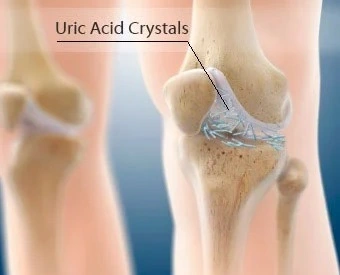
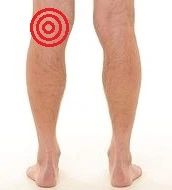
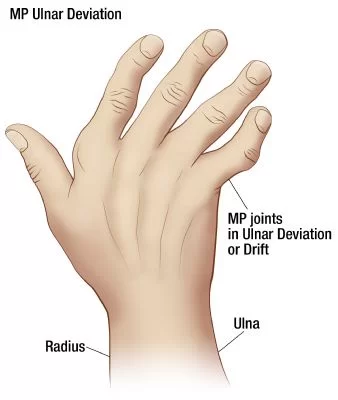
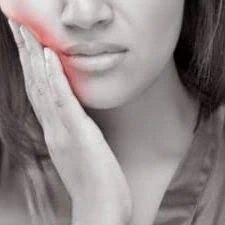
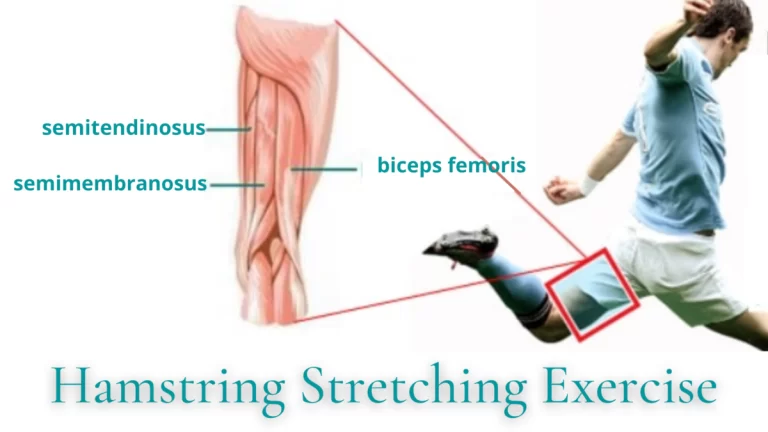
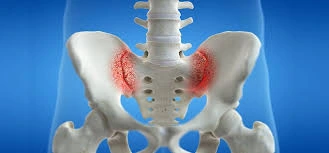
3 Comments